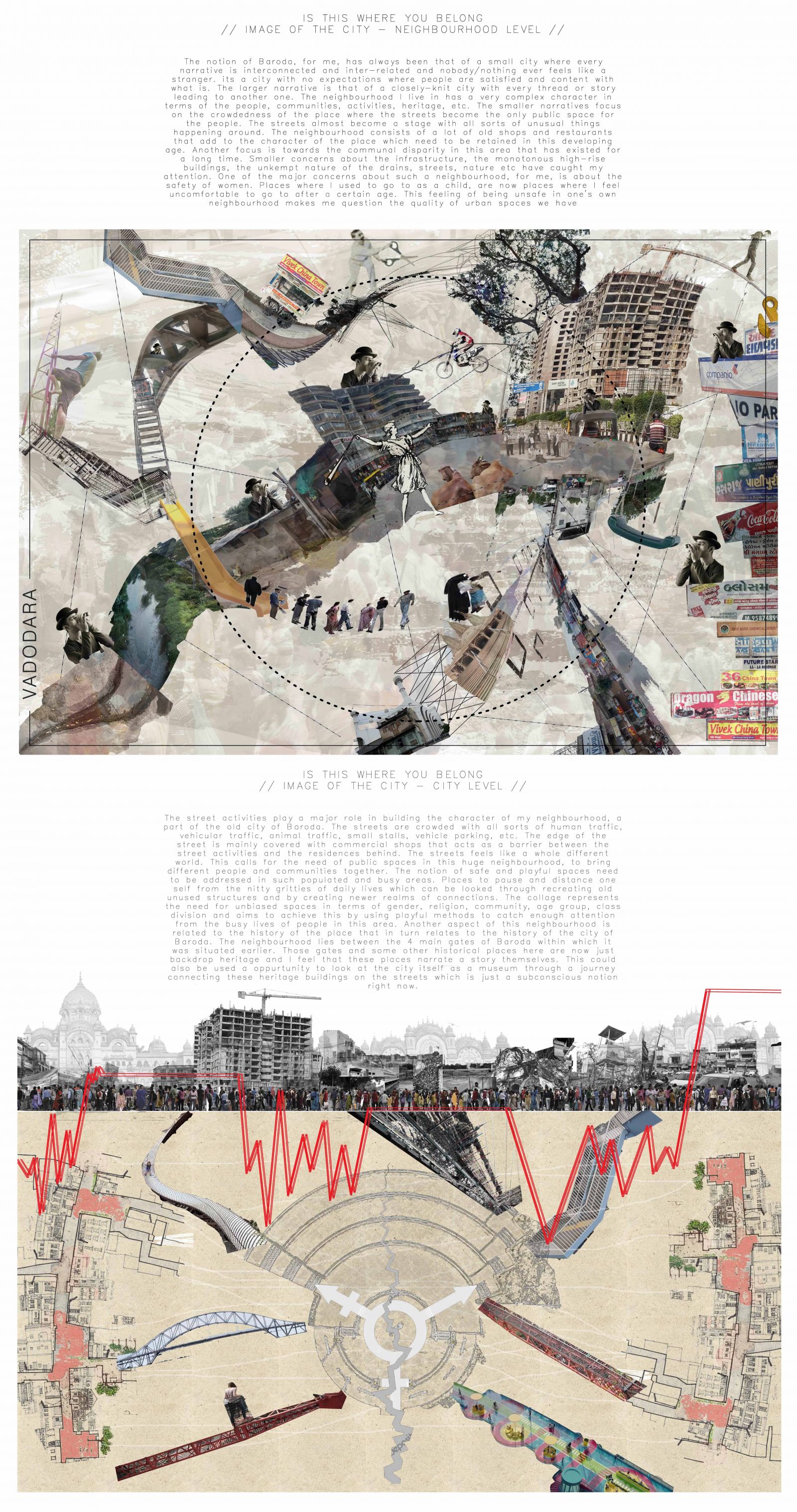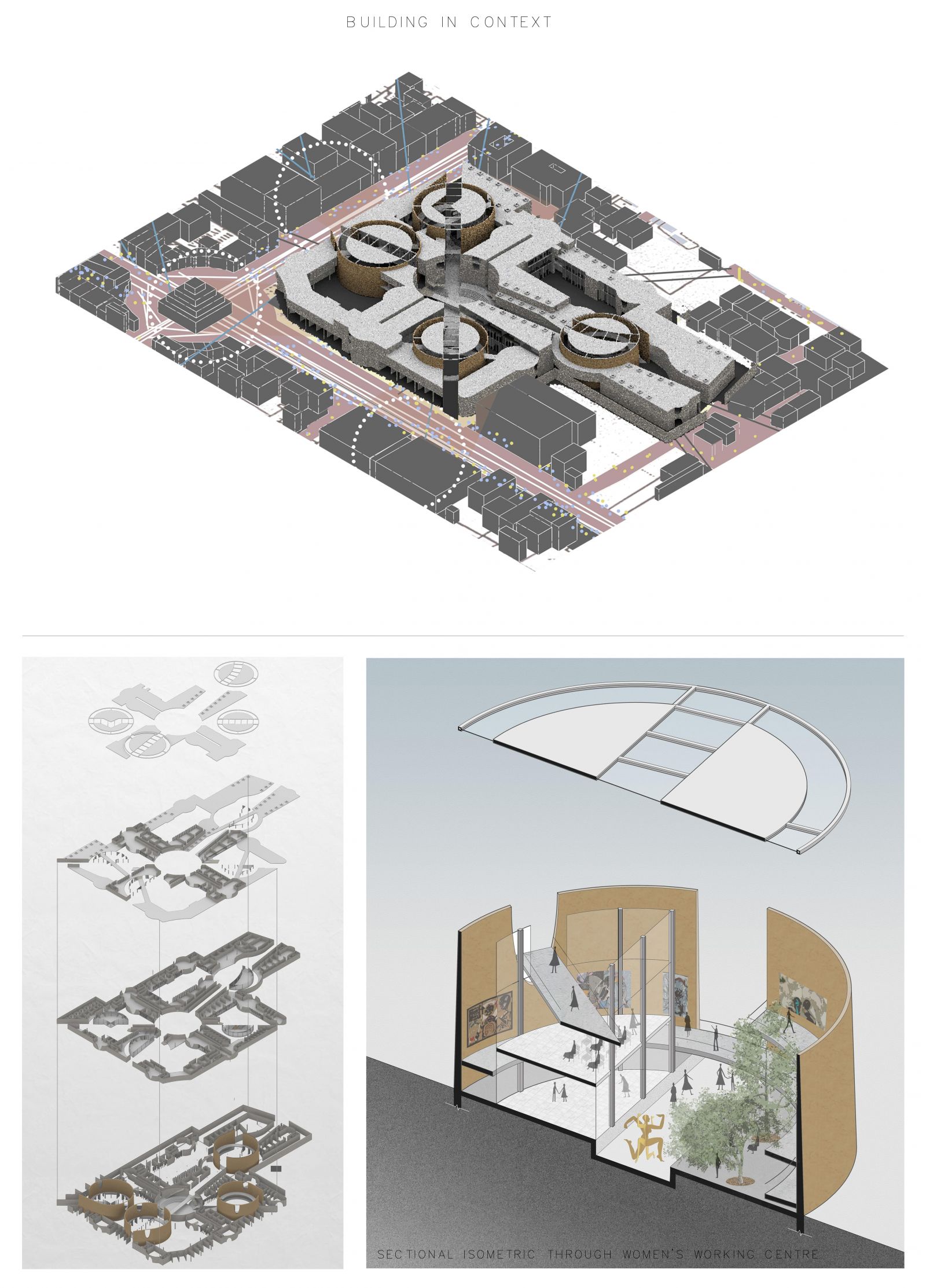CONFLICTS - OF GENDER/ OF OLD AND NEW
- Student PATEL CHARMI KAMLESHBHAI
- Code UA1717
- Faculty Architecture
- Tutor/s Deval Gandhi,Rohit raj Mehndiratta
- TA Krishna Parikh
Based in the old city of Vadodara, the narrative of the design is based on the personal association towards the neighborhood combined with the upbringing of a better neighborhood in the city. The old city of Vadodara has a rich, complicated and powerful past that is visible through the neighborhood in the historical buildings, the settlement language and its stories. This history is nowadays shadowed with the busy and chaotic life of people living and working there, of which the streets become the main witness. Being acquainted through the neighborhood, the most persistent feeling when used nowadays is that of being uncomfortable and unsafe as a woman in a street so dense that every corner seems to be filled with people's gaze.
Combining these two powerful narratives and opportunities to improve the neighborhood, the project looks at reviving history of the city and creating safer spaces for people, especially women. streets are seen as an important element to do so and hence the site is used as an opportunity to bring in streets into the project but also trying to change their nature by introducing cores that exhibit women's work as well as become working centres for women living in the shelter houses provided in the project for Sahiyar organization led by women. The intermediate functions like Primary school, Bank of Baroda, Incubation centers and Public library are functions that emerge from the existing historical contextual buildings and almost become extensions of the same. The four functions are housed in the volumes created by the site boundary and the streets. The ground floor becomes a fairly public area due to the streets and amphitheater, whereas the first floor become privatized for these functions to take place. The second floor is purely dedicated to the shelter houses. The hierarchy of functions reverses the gaze of society towards women and the women themselves become the stakeholders of the project and watch the site and surrounding from an upper level. This defined hierarchy and the intersection of working centres with the street are seen as important tools to educated people about women's place in the society.









